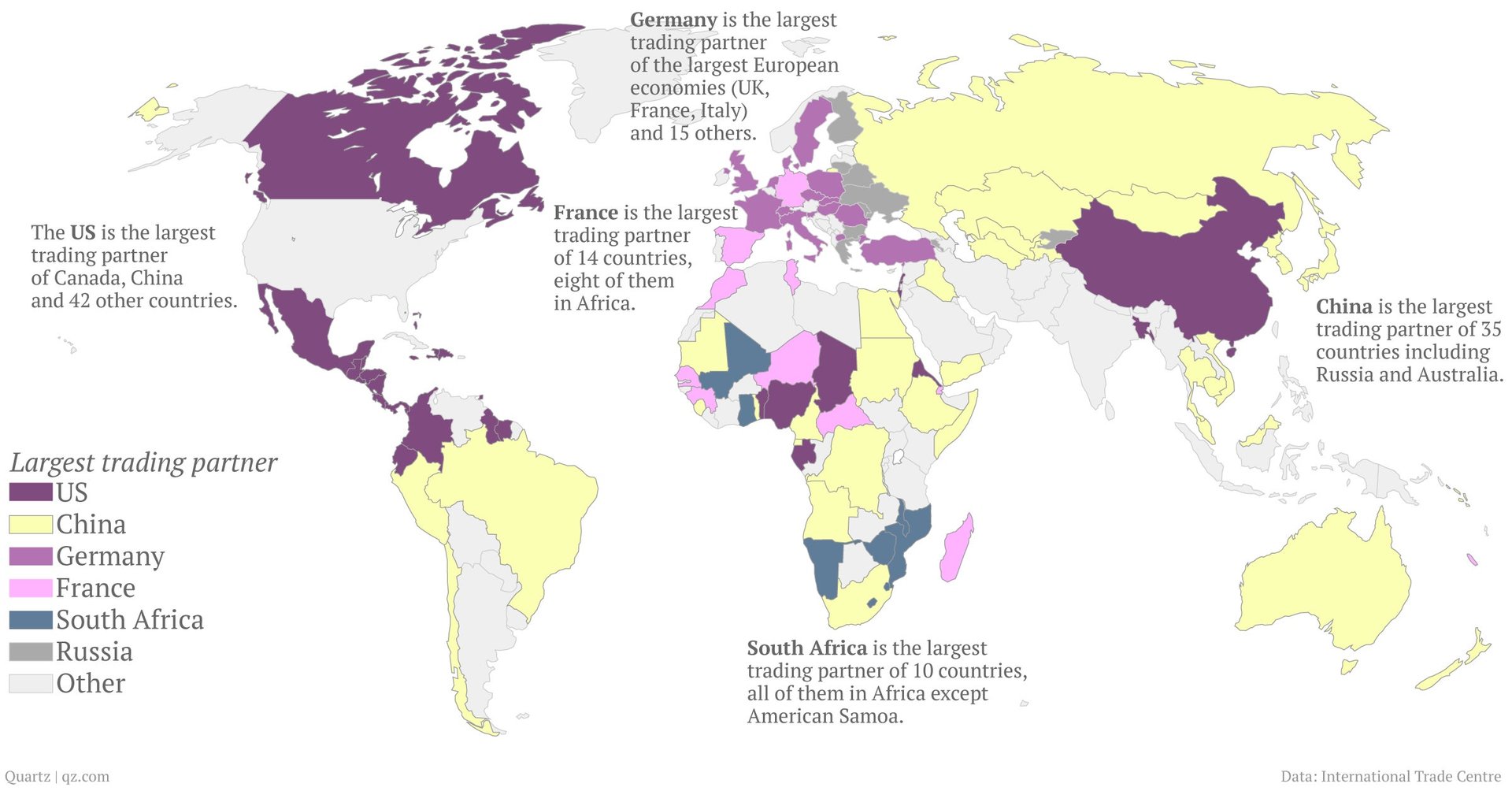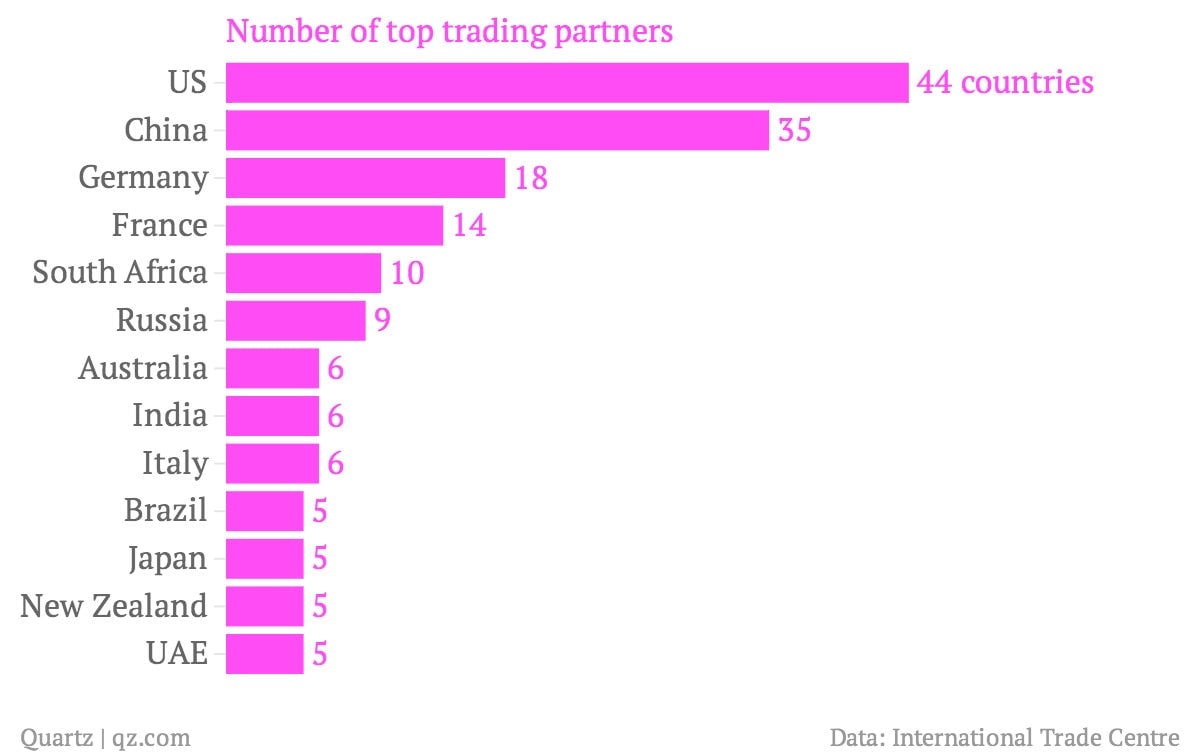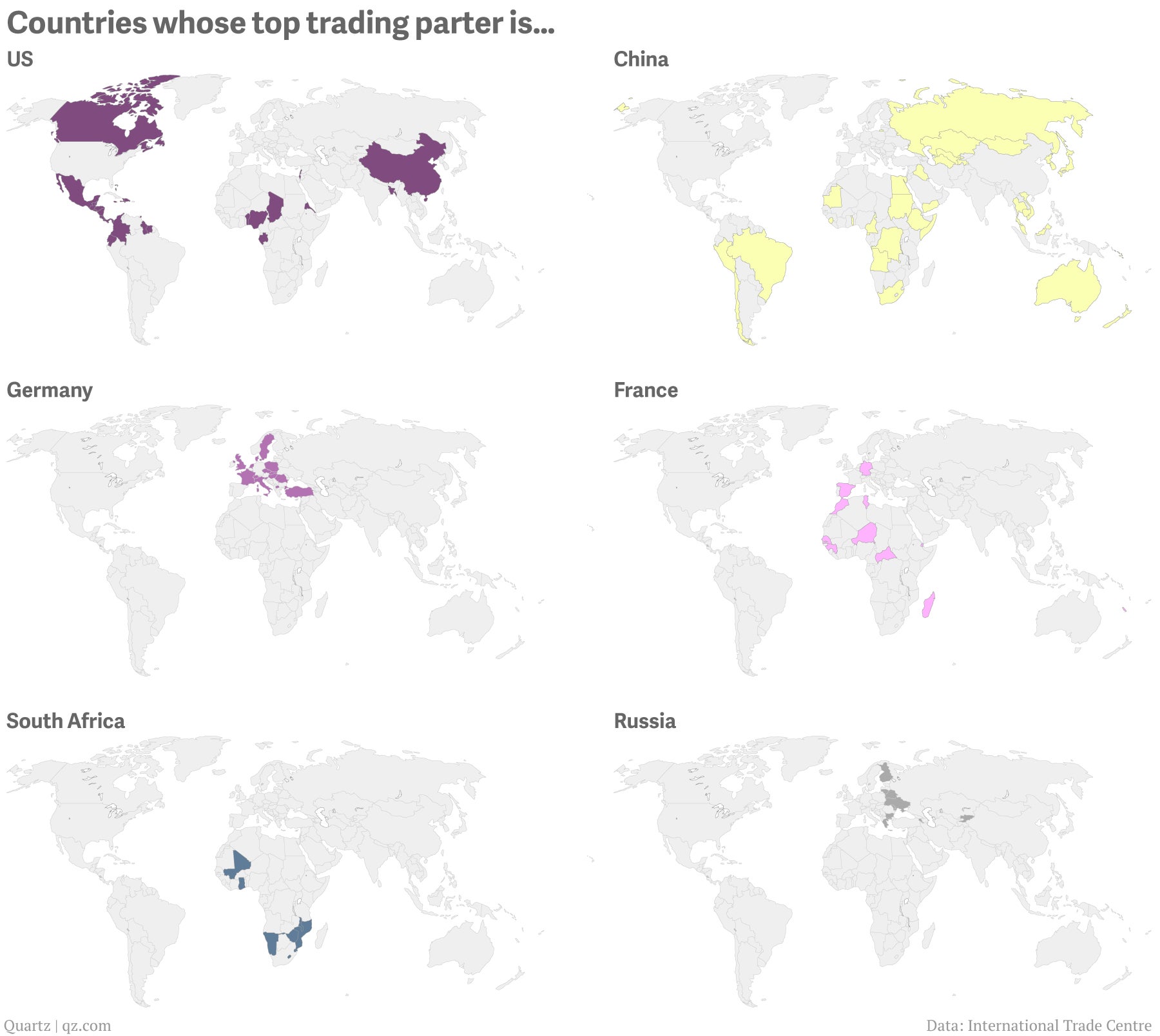Globalization really means countries just trade with their neighbors
Montenegro has Serbia, Estonia has Finland, and the Palestinian Territories have Israel. Every country has their favorite, (or at least a reluctant favorite) country to trade with. A nation’s top trading partner is an integral part their economy, providing materials, fuels, and goods for domestic use, a larger market for domestic products, or both.


Montenegro has Serbia, Estonia has Finland, and the Palestinian Territories have Israel. Every country has their favorite, (or at least a reluctant favorite) country to trade with. A nation’s top trading partner is an integral part their economy, providing materials, fuels, and goods for domestic use, a larger market for domestic products, or both.
Quartz analyzed data from the International Trade Centre to determine the top trading partner in of every nation in the world—as determined by the combined value of exported goods and imported goods from a partner nation.
Most of the countries claiming top trader status with the most nations are unsurprising—the US, China, Germany, France, and Russia—five of the eight largest economies in the world.

More than half of the 222 areas specified in the database—which includes idiosyncrasies like “Ship stores and bunkers” and “areas not elsewhere specified”—trade most with the US, China, Germany, and France. In total, just 43 places are at least one nation’s top trading partner.
But with 10 countries calling it their top trading partner, South Africa is out of place with its smaller—albeit fast-growing—economy. Its high rank is a result of its regional mining and manufacturing prowess. South Africa is by far the largest African supplier of both road vehicles and fossil fuels to other African nations, according to data from the Trade Centre. The countries that trade the most with South Africa—with the exception of American Samoa—are all in Africa.
Geographic proximity is a large driver of trade. A country’s top trading partner is often its neighbor. (Don’t be fooled by the map’s projection, The US is closer to China than it is South Africa.)
